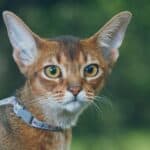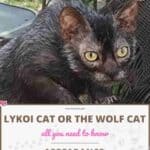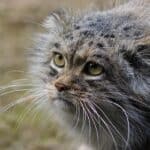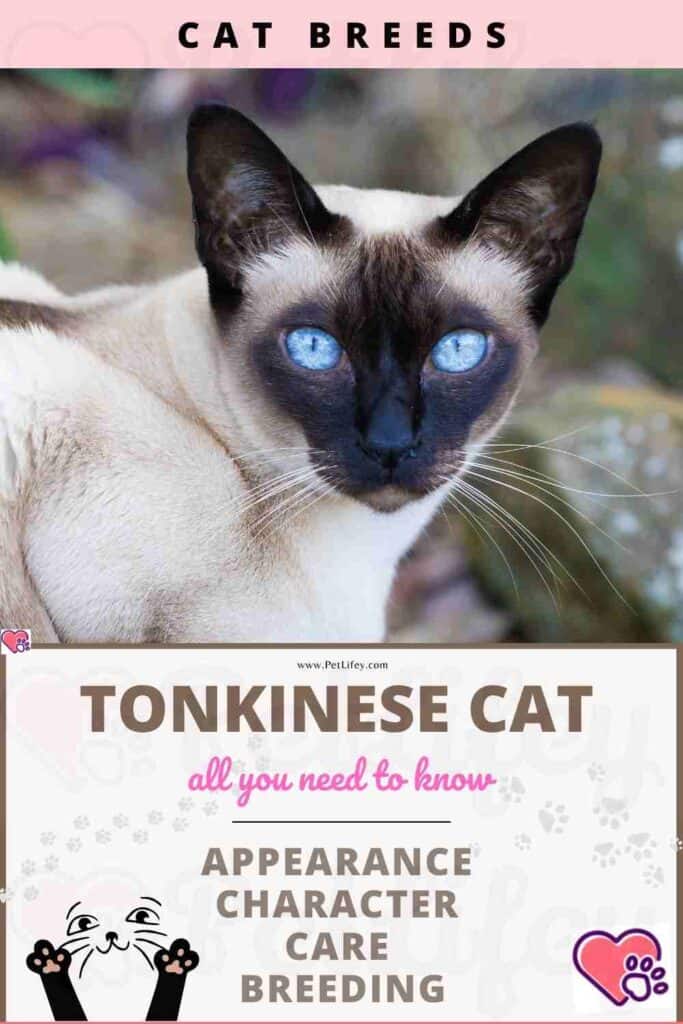
The cross between two quite distinct breeds, the Siamese and the Burmese, produced a third, in which neither of the particular genes of one of its two parents outweighs the other, and the result is a cat that harmoniously unites the qualities of both, retaining intermediate characteristics: the Tonkinese cat .
In its early days it was called Golden Siamese, but in the sixties it was admitted with its standard and new name.
It is reminiscent of the old type of Siamese and those who are nostalgic for them will fall in love with them; it is a rather lively and very intelligent cat, very sociable and cuddly, who loves to live in company but especially with its master.
The origins of the Tonkinese Cat
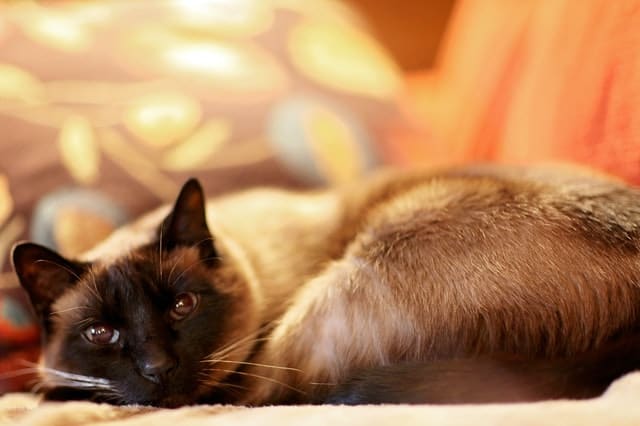
When this breed was created, the Siamese were cats with a fairly strong bone structure, with a thick tail, light blue eyes, and they were characterized by a certain general roundness.
This roundness (which they have however lost today) was lacking in the then robust Burmese; however, these two cats were much more balanced with each other than they are today, and the litters of two Tonkinese did not deviate at all from the standards of the original Siamese and Burmese breeds.
You should know that when two Tonkinese mate, half of their young will be perfect Tonkinese, one quarter of the Siamese and the other quarter of the Burmese: this mixed half no longer corresponds to the current standards of the two breeds. .
Nowadays, if we wanted to recreate a Tonkinese, it would be unthinkable to couple the two original breeds, which have become too dissimilar at the morphological level; you would have to get a Siamese and a Burmese of the old type, which is very difficult.
Appearance of the Tonkinese Cat
Semi-slender and muscular, the Tonkinese cat has a good weight compared to its average size.
The head is inscribed in a triangle a little longer than it is wide, with rounded contours; the nose is slightly convex, and the ears, tilted forward and wide at the base, are rounded at the tip.
It is located in such a way that the outer edge continues the triangle of the head; the eyes, of medium size and of a wonderful aquamarine color, are slanted, the upper eyelid is curved in an almond shape, while the lower one is rounded.
The slightly rectangular body has a round chest and the hips are higher than the shoulders; the legs, proportionate to the body, have a moderately fine bone structure, with fine but robust musculature; the posterior ones are a little longer than the anterior ones.
The feet, oval, are of medium size. The tail is not thick: ample at the base, it tapers to the tip which is slightly blunt, and its length varies between medium and medium long.
The coat is very shiny and therefore silky, short but very thick, fine, soft and adherent.
Hair color of the Tonkinese Cat
At the beginning, there was only the mink (mink); today, there are cream, red, lilac, blue, chocolate, lilac, tortie, blue tortie and chocolate tortie Tonkinese ; the pads, lips and nose match the base color.
Compared to the Siamese, the Tonkinese is much less contrasted between its dark tips and the rest of the dress.
The Character of the Tonkinese Cat
The Tonkinese cat has all the qualities of its ancestors without having retained the faults; indeed, it is a splendid union between the excessive Siamese and the placid Burmese. Its character is in fact very balanced, intelligent and lively, and it is very attached to its master; overall a friendly cat with a really lovely character.
Hug:
This cat seeks companionship and attention from humans. It is generally considered affectionate.
Player:
Energetic, even athletic, this feline has a great need for exercise and entertainment. Daily interactive and independent play sessions are essential to its well-being.
Calm:
When its activity needs are met, it relaxes with its humans, its congeners or sometimes alone.
Intelligent:
Since it is active, it shows a great interest in its environment. Insightful, it represents a good candidate for training that stimulates its intellectual capacities.
Fearful / Suspicious of Strangers:
Depending on how socialized it was at a young age, this cat is generally curious about novelty.
Independent:
It adapts to many constraints and living conditions, but appreciates the presence of humans or congeners.
Behaviour of the Tonkinese Cat
Talkative:
Often less talkative than the Siamese, it is nevertheless considered rather vocal.
Greedy / gluttonous:
Its high energy level goes hand in hand with its appetite. Feeding them in interactive bowls allows them to meet its nutritional needs while offering them an independent activity.
Need for exercise:
It has a great need for exercise which can be met with regular periods of play.
Runaway:
Curious and energetic by nature, some individuals of this breed may have a tendency to want to explore their living environment in detail.
Compatibility of the Tonkinese Cat with other animals
The Tonkinese and the Dogs:
This cat can acclimatize to living with a dog since it generally seeks social interactions. However, it is necessary to provide for a gradual introduction as well as an environment comprising heights. Note that the way the kit
ten has been socialized will have a big influence on its sociability with dogs.
The Tonkinese and the Other cats:
It is a good candidate for life with feline congeners. Appropriate socialization in the kitten, a gradual introduction of one cat to the other and a living environment rich in heights are all factors that will facilitate cohabitation between the cats of the household.
The Tonkinese and the Children:
The great energy of this cat and the overflowing creativity of the children promise many surprises! However, it is important to educate children from an early age to fully understand cat body language to guide them in developing a healthy relationship for all.
The Tonkinese and the Elderly:
It goes without saying that a lot of behavioral variations are observed in cats, as in humans. However, it should be kept in mind that individuals of this breed generally have a great need for stimulation, which might not be met by a rather calm person.
Price of the Tonkinese Cat
On average, the purchase price of a kitten in breeding is between 1000 USD and 1500 USD . This cost can vary according to the line, the breeding, the age or even the sex. For the monthly budget, it takes an average of 50 USD / month to meet his needs, by offering them a quality diet and making sure to maintain them in good health.
Maintenance of the Tonkinese Cat
Grooming:
Whether it has short or long hair, the undercoat is scarce. Weekly brushing is usually sufficient.
Hair
loss : Hair loss is not very pronounced.
Food of the Tonkinese Cat
Considering its high energy, a quality diet appropriate to its age and medical requirements is necessary.
Caring for the Tonkinese Cat
It has an iron health and does not require any particular care; naturally, it will often have to be brushed, using a soft brush, to keep the shine of its wonderful hair.
Health of the Tonkinese Cat
Life expectancy:
Average longevity is 13 to 15 years, but it is not uncommon for individuals to exceed the 20-year mark.
Resistant / robust:
Since it has little undercoat, its protection against the cold is limited. It is therefore not particularly considered to be resistant to thermal fluctuations.
Tendency to gain weight:
There are many risk factors for feline obesity, including the cat’s age, environment, diet, and activity. As the Tonkinese are quite energetic, the risk of developing overweight decreases considerably when their physical activity needs are met.
Frequent illnesses:
Although it is generally recognized that cats of this breed have good physiological health, an annual medical check-up is recommended. Some individuals can suffer from the same diseases as other domestic cats such as oral pathologies .
The following pathology is more frequently diagnosed: progressive atrophy of the retina , leading to blindness (genetic screening is possible)
Reproduction:
Marriages are authorized between Tonkinese or with the English Burmese. Marriage with the Asian Longhair is also provisionally accepted (until 2020). The average litters are 4 kittens.
Good to know
Kittens are born with a rather pale coat compared to adults. The coat color darkens until approximately two years of age.




